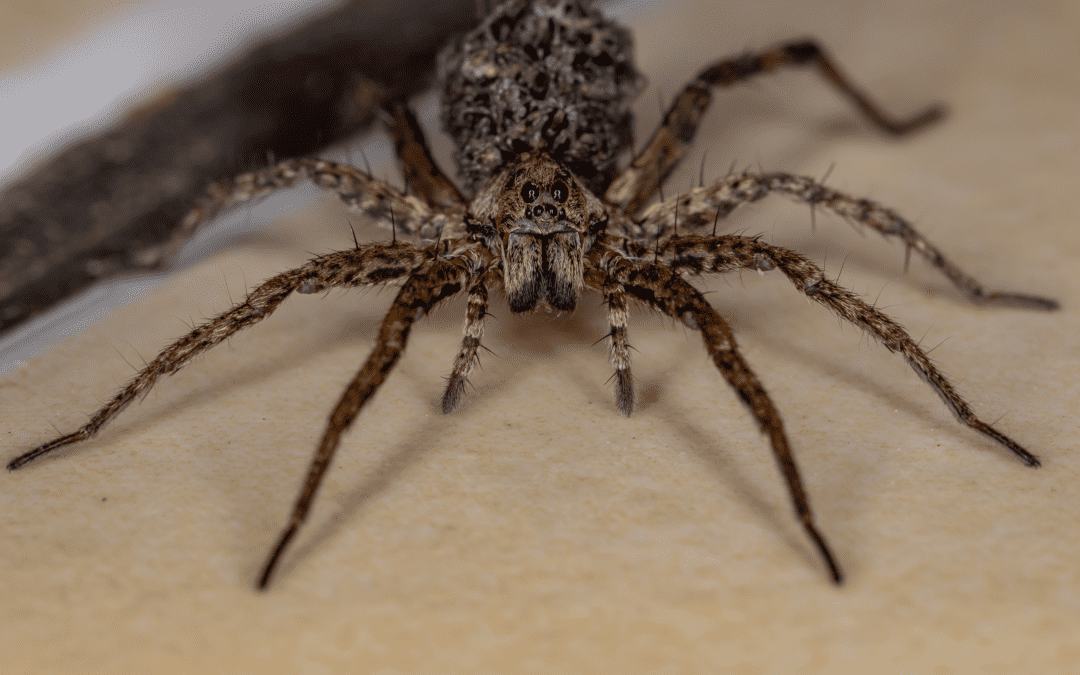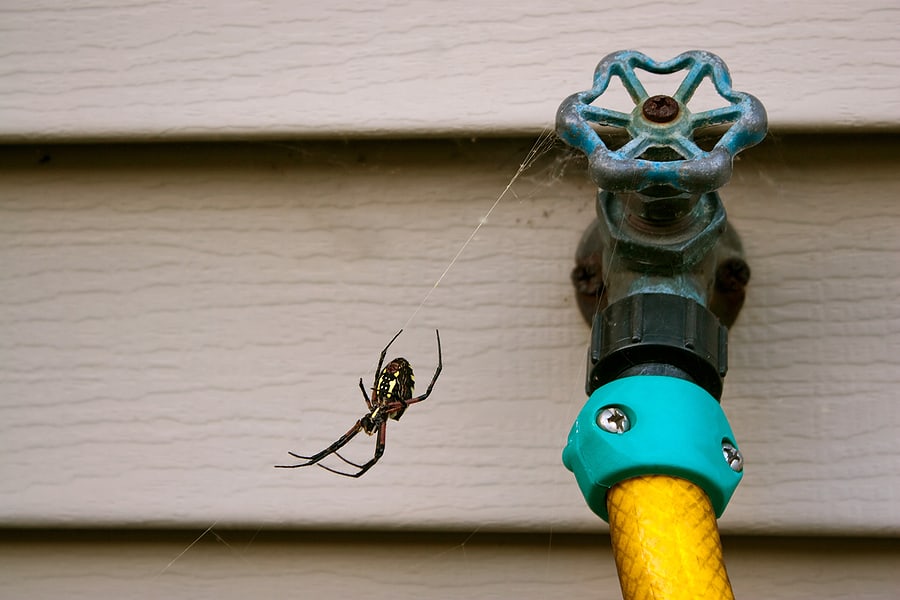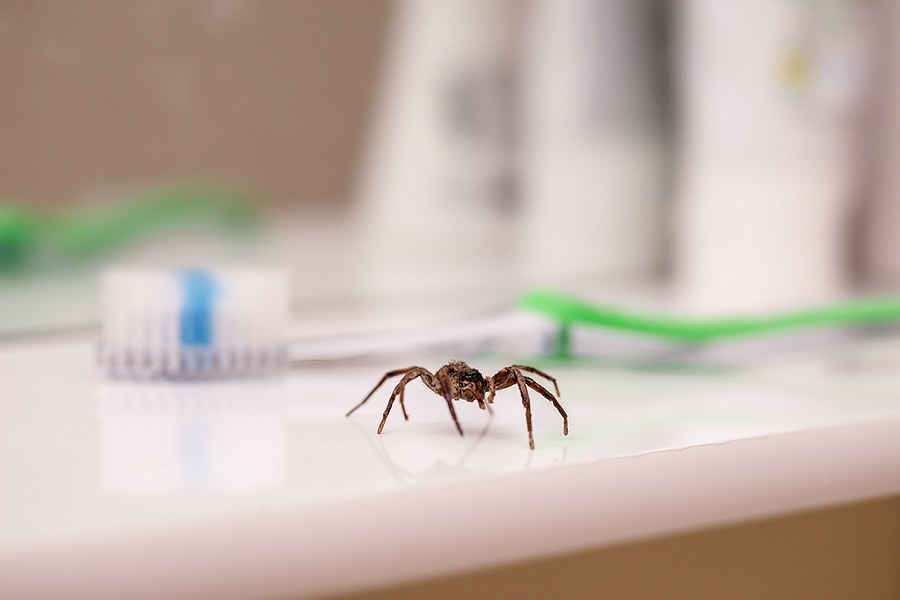READY TO GET STARTED?
REQUEST A FREE ESTIMATE
Fill out the form below or call (888) 466-7849 for a free, no-obligation estimate.

In the southern states, there are many species of spiders found and there is a good chance you’ve seen some of them. Many spiders make themselves at home in our yards, gardens, flower beds, and inside our homes. But as the weather gets cooler, you’re bound to see more spiders come inside to seek shelter from the cooler weather. Here are a few common spiders that may invade your home when the temperatures drop.
A house spider is a common name given to spiders that are primarily found inside your house. They vary in color, but most are yellow to brown with elongated abdomens. They can usually be found in ceiling corners, under furniture, and inside closets, basements, garages, and crawl spaces. When outdoors, they are often found in windows, under eaves, and near light sources.
They can be a nuisance to have but are not a threat to humans. Because of the low humidity in newer homes, house spiders are becoming less common in houses and more likely to be found in garages, sheds, barns, and warehouses.
A brown recluse spider is light to dark brown, with a signature dark brown violin shape on its back. They are commonly found outdoors in debris and woodpiles but can be found indoors usually underneath furniture, inside storage bins, and in dark recesses like baseboards. The brown recluse can also be found hiding out in closets, attics, and crawl spaces.
This spider species is one you should look out for as its bite is painful. If cornered, they will bite, leaving an ulcerating sore that must be treated by a medical professional immediately.
Wolf spiders are typically dark brown with pale markings or stripes. Their legs are long and spiny, and most have hair on their bodies. If found indoors, they are typically on the floor, especially along walls and under furniture. If found outdoors, they are usually under leaves, woodpiles, yard debris, and stones.
They can bite, but it is very rare for them to do so; even if they do it doesn’t pose a significant threat to humans. They are unique in that they don’t catch their prey in webs but will chase them down using their speed.
One of the most easily identifiable spiders in the US, these shiny, black spiders are one of the most fearsome out there. Most can identify them by their prominent red hourglass shape on their back. Black widow spiders are commonly found around woodpiles and can easily access your home by hitching a ride on your firewood. They are also found in garages, eaves, empty boxes, and even shoes that are stored away.
Females are more aggressive than males and will bite. They can be extremely harmful to humans and their bite should be taken seriously. Symptoms from a bite include fever, elevated blood pressure, nausea, and sweats. It should be treated immediately to stop any further neurological damage.
Spiders are more common in the fall and winter as they make their way indoors, so be on the lookout for these spiders once the temperature begins to drop. If you suspect a spider problem, contact your local pest control company who can help identify the type of spider you have and provide you with a thorough inspection and treatment plan that is right for you and your property.

Although spiders are considered a year-round pest, they become more visible and active in the spring. Overwintering pests like spiders emerge as the weather warms up to lay eggs for the approaching season. Spiders are predators, preying on smaller insects for food. They are usually not a huge threat to humans with only a few venomous species in our area. In fact, they can be quite beneficial to have around your home, working as a form of natural pest control by eating other insects you may have around.
If the thought of sharing your home with spiders creeps you out, don’t fret! Here are some spider prevention tips you can use this spring to help keep these pests out.
Protecting Your Pets from Fleas and Ticks
What Happens During the Bee Relocation Process?

Creepy and crawly, spiders can easily sneak into homes without you noticing. Most spiders that homeowners come across are harmless; but if you don’t take precautions, you can find them infesting your home. Below are some easy, do-it-yourself tips for spider prevention.
Clean Up Clutter
Spiders tend to look for dark, secluded areas to inhabit. You can often find them in rooms that have clutter, such as basements and attics. To keep these pests from infesting, keep garages, sheds, attics, basements, and other areas that aren’t utilized very often clean and clear of clutter.
In your regularly used rooms, be mindful of leaving clothes or clutter around the house. Try to avoid leaving clothes and shoes on the floor and instead, consider storing them in plastic bins. Shake out any clothing left on the floor and in the hamper.
Repair and Seal
The smallest gap or hole can allow spiders right into your home. Look around the inside and outside of your home and search for any open holes or gaps. Inspect your window screens, doors, and siding, as these are places that can provide openings leading inside.
If you find openings, seal them as soon as possible to eliminate the chance of these pests from entering. Make sure to inspect your house seasonally and provide any repairs.
Check Before Entering
Packages, secondhand furniture, and even groceries provide a perfect gateway inside homes for spiders. These pests will often hitch a ride on these items without you noticing. Make sure to inspect all packages delivered to your porch or steps, groceries as you unload them, boxes of decorations brought in from storage, and used appliances and furniture bought secondhand.
Spotting spiders can be difficult, but once you see them or suspect that you have a problem, it’s best to call your local pest control company to help eliminate and prevent them. A service professional will inspect the exterior and interior of the home to identify and provide you with the best plan of action to treat them.